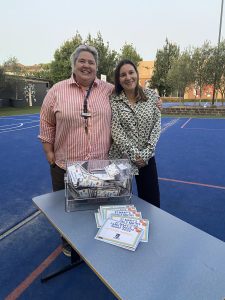This year, St Mary’s has implemented the Mathematics Curriculum 2.0. This exciting update is to be implemented across all Victorian schools by the end of 2025, as directed by the Victorian Curriculum Assessment Authority (VCAA). The updated curriculum is designed to make learning maths more engaging and effective for our students.
Why the Change?
The Mathematics Version 2.0 Curriculum is based on findings and recommendations from some of Victoria’s educational leaders and experts, mathematics specialists, and teachers. It also reflects feedback from the VCAA’s formal monitoring conducted over the past five years.
Teachers will find that the revised Mathematics curriculum streamlines teaching, learning, assessment, and reporting processes with content descriptions that are clearer and easier to understand and sequence. The achievement standards have also been refined and clarified to help teachers assess student learning more effectively. The revised curriculum puts a greater emphasis on students developing skills through a focus on the mathematical processes.
Revisions to the Curriculum
Here are some of the changes you can expect:
High level overview of Levels F–10 revisions
- Six strands: Content is now organised under six strands—number, Algebra, Measurement, Space (formerly Geometry), Statistics, and Probability—with no sub-strands.
- Connections: There are clearer connections between the content descriptions and the achievement standards.
- Proficiencies: The four proficiencies of Understanding, Fluency, Reasoning and Problem-solving have been embedded into the content descriptions and achievement standards, which now more clearly articulate the proficiencies.
Levels F–6 revisions
- Mathematical Modeling: There is a greater emphasis on the processes of mathematical modeling and, from Level 3, statistical investigation and conducting repeated chance experiments.
- Resequence of content: The content has been resequenced to provide students with more opportunities to consolidate and master key skills.
- Play based: Play- and exploration-based content is included across Foundation to Level 2.
- Computational thinking: There is a continued focus on computational and algorithmic thinking.
- Probability: The Probability strand commences at Level 3.
What Does This Mean for Reporting?
Further to implementing the new Mathematics curriculum, there will be changes to how Mathematics is reported in 2024 and beyond. In your child’s previous report, the teacher reported against the three strands of the achievement standard for Mathematics (Number and Algebra, Measurement and Geometry, and Statistics and Probability). Under the Mathematics Curriculum 2.0, your child’s teacher will report against the achievement standard as a whole, providing a single, aggregated score. In order to support the transition, St Mary’s School will provide additional reporting against the six strands.
As the achievement standards reported on have changed, the first time you receive a report under the Mathematics 2.0 curriculum, it will only show achievement and not progress. For all reports after this, progress will be shown against the single achievement standard. The VCAA indicates that these changes were made to help teachers plan their teaching and learning programs in mathematics, giving them more flexibility to support students in linking ideas within mathematics and with other curriculum areas.
What This Means for You
There’s no need to worry about complicated changes at home. Our dedicated teachers will continue to guide your child on their mathematical learning journey. We’ll keep you informed throughout the year, and you’re always welcome to reach out with any questions.
Mathematics 2.0 is a positive step forward, equipping our students with the skills and confidence to succeed in a world that increasingly relies on maths.
We understand that change can be confusing, so please don’t hesitate to contact your child’s teacher or Ms Lucy McGrath (Leader of Mathematics) if you have any questions.

